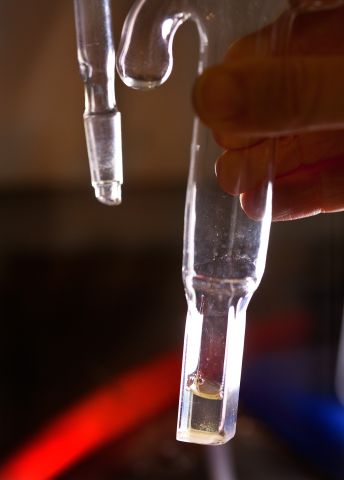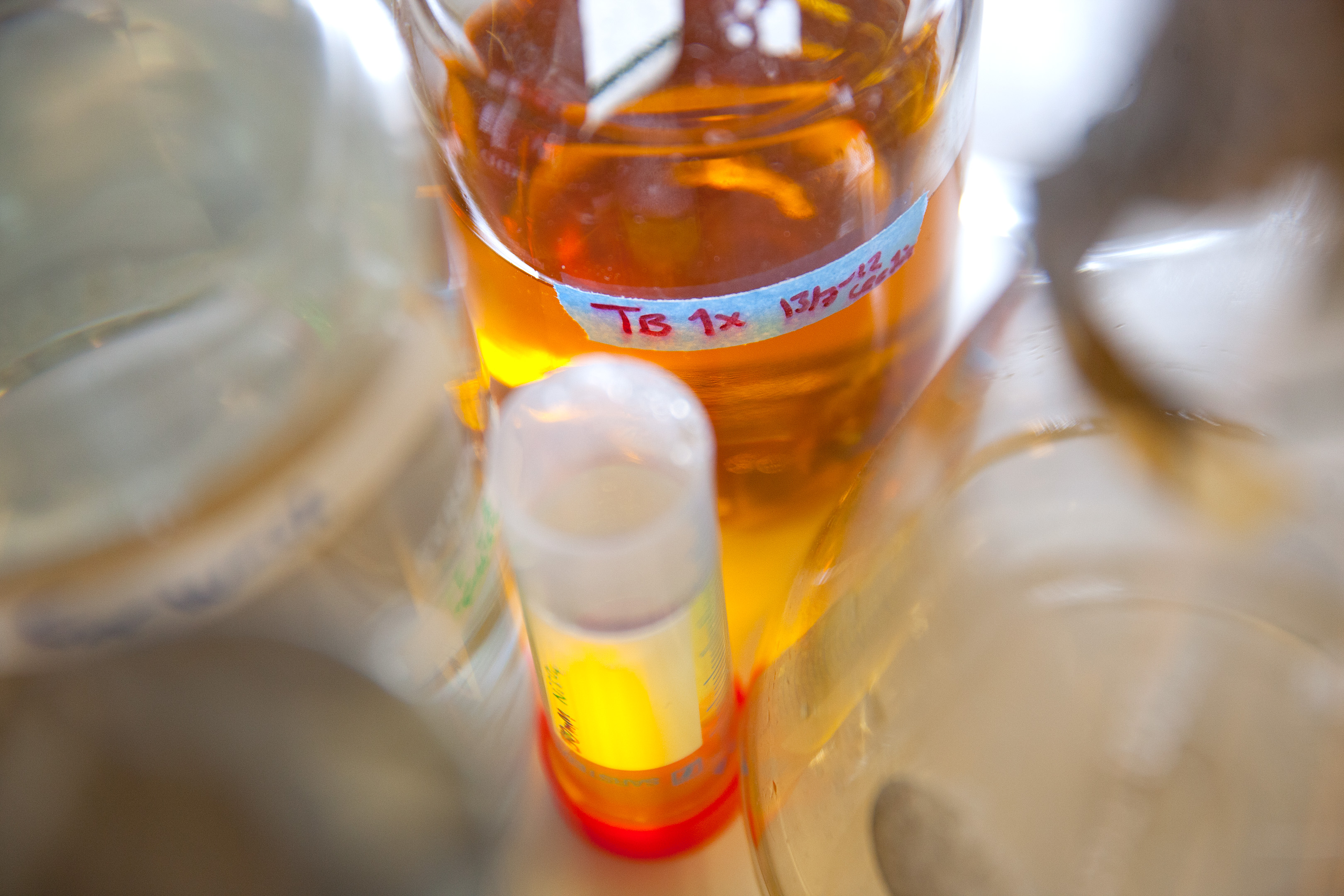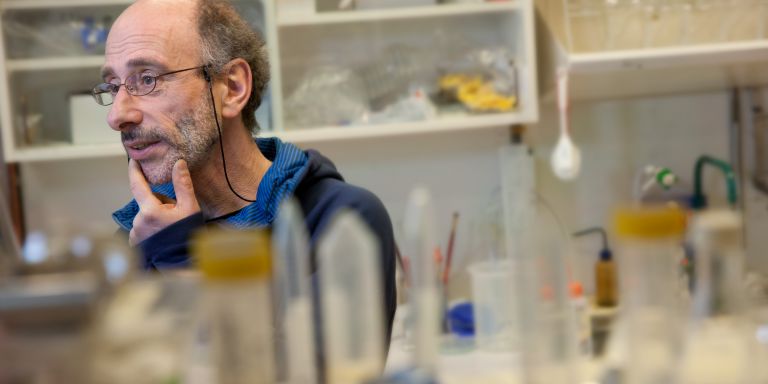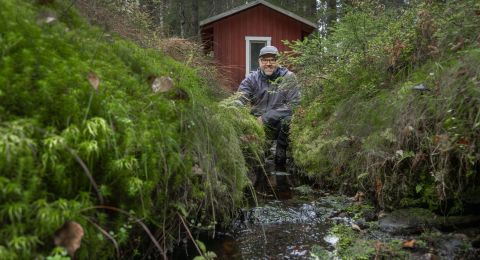
Project Grant 2013
Architecture and functional dynamics of the cellular power plant
Principal investigator:
Peter Brzezinski, Professor of Biochemistry
Co-investigators:
Martin Högbom
Martin Ott
Christoph von Ballmoos
Pia Ädelroth
Institution:
Stockholm University
Grant in SEK:
SEK 39.1 million over five years
Mitochondria are organelles within cells. They are surrounded by two membranes, walls that separate them from the rest of the cell. The inner-membrane contains proteins that exchange electrons with each other and pump protons from one side of the membrane to the other side. In this way, the membrane becomes charged like a battery, with excess positive charge on one side and negative charge on the other. The energy stored in this battery is utilized to produce adenosine triphosphate (ATP), which can then be used as a source of energy for most cellular processes.
The process is called cellular respiration. It is based on interactions between a chain of proteins that are bound within the inner membrane. The discovery and description of how these proteins interact culminated in 1997 with a Nobel Prize in chemistry that awarded the establishment of how ATP is produced. At that time, the members of the respiratory chain were envisioned to “swim around” separately in the membrane and were functionally interconnected - like a chain of reactions.
Supercomplexes that are held together by "glue proteins"
However, in the past 15 years, several reports have been published, which show that the proteins of the respiratory chain are physically bound to each other forming “supercomplexes”. In 2012 and 2013, entirely new membrane proteins were also discovered. They are small proteins that function as glue between the proteins and thereby hold the supercomplexes together.
“The simplest view of the respiratory chain is that all proteins swim randomly in the membrane. The next level is that they are linked in larger complexes, which would still be possible to study using our biophysical tools. But the next level, and these are relatively new findings, is that the protein complexes are dynamic such that their composition and number is a function of time, depending on conditions.” explains Peter Brzezinski.
Suddenly, the structure and function of the respiratory chain has become even more complex.
“This indicates a very advanced form of regulation where the cell controls the combination of large membrane proteins and groups of membrane proteins in the mitochondrial inner membrane by ensuring that different small glue proteins are available in various amounts.”

Many exciting questions
With a project grant from the Knut and Alice Wallenberg Foundation, Peter Brzezinski and his colleagues now want to clarify how the respiratory chain works as a whole. They are seeking answers to many exciting questions, for example: Why is the interaction between the different membrane-bound proteins needed at all? Is it not enough that the proteins convert energy individually? Why is this type of regulation necessary in mitochondria? Could it be that different energy-conversion efficiency is needed at different times, or is the regulation necessary to control how quickly the energy is converted?
“There are also new results indicating that there are fewer and fewer supercomplexes the older you get. An interesting question is then what the physical changes are within the membrane and why the supercomplexes dissociate when one gets older?”
The project is a collaboration between five research teams at the Department of Biochemistry and Biophysics at Stockholm University. All these teams are interested in protein structures and energy conversion in cells and living organisms, and use advanced physical techniques developed at the Department.
“What is unique for our techniques is that we can look at how individual electrons and protons move in every protein as well as in the membrane with a time resolution of nanoseconds.”

Three approaches are used
The research teams complement each other in that they study the respiration chain on different levels, from different angles and based on different approach. Roughly speaking, three approaches are used in the project.
One is to cultivate yeast under different conditions, extract parts of the mitochondria to then study the function of individual components, supercomplexes and the entire cell.
Another way is to extract the supercomplexes, study them to understand basic principles and mechanisms at the molecular level and determine their structure using x-ray crystallography.
A third way is to recreate the mitochondria’s power plant in artificial membranes, piece by piece, to understand what components are important in order for the whole to work. This is done by extracting every protein group and every glue protein individually and then put them together in test tubes to thereby create an “artificial mitochondria”.
“The major challenge is to understand and interpret what we will see. The larger the system and the more components, the more interpretation possibilities there are. But the project is really exciting. It is based on an entirely new way of thinking.”
Text Anders Esselin
Translation Semantix
Photo Magnus Bergström
Peter Brzezinski’s team studies individual proteins to understand fundamental mechanisms at a molecular level.
Pia Ädelroth’s team is also looking at individual proteins, but with a focus on reactions involving nitric oxide and how these processes are linked to energy conversion.
Martin Högbom’s team is focused on determination of protein structures using crystallography.
Christoph von Ballmoos’ group co-reconstitutes several purified proteins in the same membrane to study how the proteins interact.
Martin Ott’s team manipulates yeast using genetic methods to study how proteins are linked and work in whole mitochondria.



